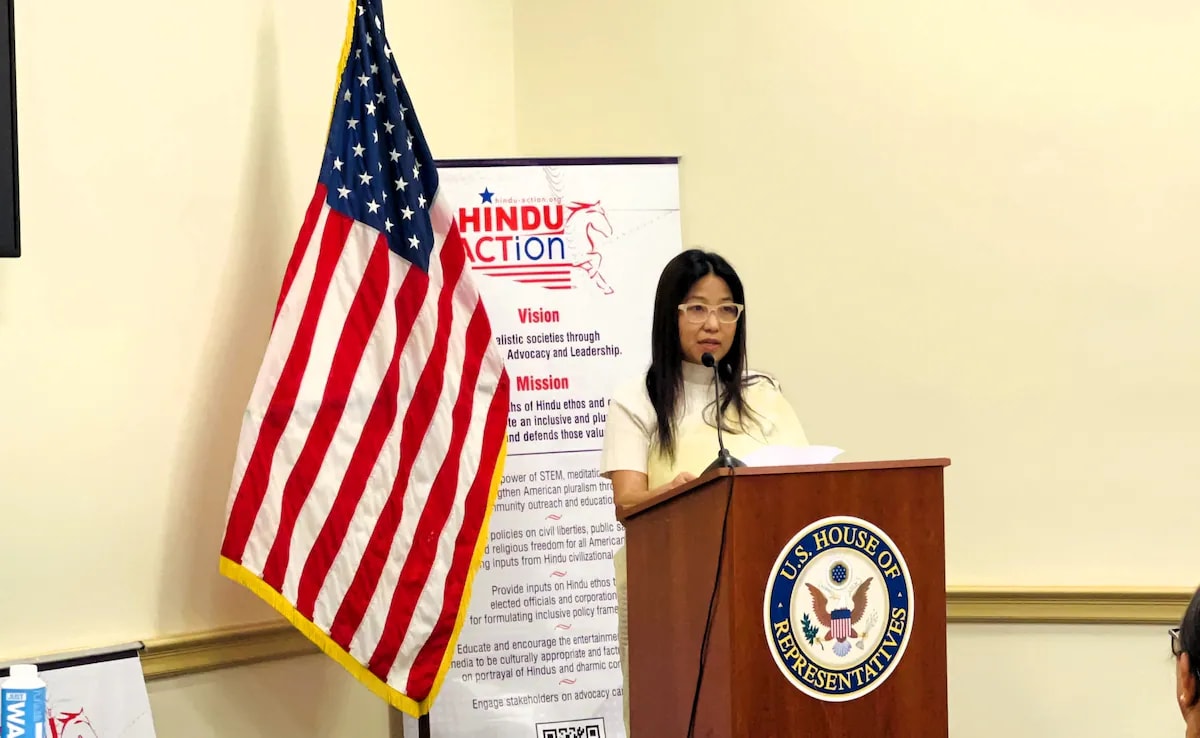
Indian-American Rajshree Keisham told a Congressional hearing the Manipur crisis is not a religious one
New Delhi:
The Manipur crisis is a complex web of internecine conflict marked by violence, mistrust, socio-political tensions and a deadly trifecta of insurgency, narcotics and illegal infiltration, which pose significant threats to India’s national security, but is not a religious conflict between two communities, an Indian-American scholar told a US Congressional hearing.
Rajshree Keisham, an Indian-American scholar, said the projection of the Meitei-Kuki ethnic clash as a religious conflict by some sections “not only ignores the complex social fabric of Manipur, but also heightens tensions.”
“… Efforts have been made to portray this communal conflict in reductionist terms, projected to the world as the Hindu majority prosecuting the Christian minorities. This oversimplification not only ignores the complex social fabric of Manipur, but also heightens tensions,” Ms Rajshree said in the Congressional hearing, adding the attempts to project the Manipur ethnic violence as a religious one is a “classic case of Hinduphobia”.
“The majority-minority debate should be examined in terms of the intersectionality of time, space, and context. For example, Christians are a minority in India, but they are a majority in the northeastern region,” said the Indian-American scholar, who holds a PhD in Sociology specialising in Gender Studies and Socio Anthropology.
Over 180 people have died and thousands internally displaced after ethnic clashes broke out in Manipur on May 3 following a protest by the Kuki tribes over the Meiteis’ demand to be included under the affirmative action Scheduled Tribes (ST) category.
Ms Rajshree said Manipur’s diversity is its strength, as within the Hindu community in the state, there are other ethnicities including people from Punjab, Bihar, Tamil Nadu, Nepal and more. Similarly, the Christian community includes Nagas, Kuki and also Meiteis. “This diversity is not a source of division, but a testament to the harmonious coexistence that has characterised Manipur for generations,” she said.
She pointed out some social activists and religious leaders of the Christian community have strongly denied the Manipur violence was based on religious lines.
“Mizoram activist Alinery Lian-Luwang told the UN that ‘the narratives peddled by international media that the Manipur conflict is of religious nature, holds no ground’,” Ms Rajshree said, referring to the speech by the activist at a general debate at the 54th session of the UN Human Rights Council in Geneva.
“… The Archbishop of Mumbai categorically mentioned, and I quote, ‘It is given a religious twist, but it is not a religious conflict between two religions, it’s between two tribes, and we must now not do anything that will worsen the situation’,” Ms Rajshree said at the Congressional hearing organised by HinduACTion, and Namaste Shalom Multi-Faith Alliance to address rising antisemitism and Hinduphobia in both the US and Canada.
“In recent times, there has been an alarming surge in attempts to exploit the Manipur conflict as a platform for propagating Hindu hate. This disturbing trend has found traction among certain factions… in the United States, who have strategically exploited religious sentiments to further their divisive agenda. What is even more concerning is the convergence of some radical Islamist groups in the United States, who have appropriated and aligned themselves with this cause. They perceive this situation as a prime opportunity to tarnish the image of Hindus on a global scale,” Ms Rajshree said.
In August, three months after the Manipur violence began, a speech by the leader of a Canada-based Kuki-Zo tribes group from Manipur over the ethnic violence back home had sparked a massive controversy. The event was held at the same gurdwara in Canada’s Surrey, whose chief and Khalistani terrorist Hardeep Singh Nijjar was shot dead by unidentified people in June.
Lien Gangte, the Canada chapter chief of the North American Manipur Tribal Association (NAMTA), in his address condemned what he called “attacks on minorities in India” and asked Canada for “all possible help”.
NAMTA had posted a video of the event on Facebook and X (formerly Twitter) on August 7. It deleted the videos much later when the row between India and Canada surfaced following Prime Minister Justin Trudeau’s claim that “Indian government agents” were involved in the killing of Khalistani terrorist Nijjar.
India’s anti-terror body the National Investigation Agency (NIA) on September 30 said it is investigating a transnational conspiracy case involving terrorist leaders in Bangladesh and Myanmar. The NIA statement came after a terror accused, Seiminlun Gangte, was arrested and charged with conspiring with Myanmar- and Bangladesh-based leadership of terror outfits to wage war against India by exploiting the ethnic unrest in Manipur.




